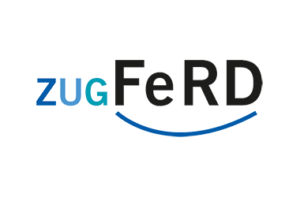ZUGFeRD Format Overview
The Central User Guide of the Forum Electronic Invoice Germany, ZUGFeRD format for short, is an electronic data format for the exchange of invoices. What sounds banal at first is well on its way to becoming a new standard, indeed a driving force, in invoice communication between two companies, administrations or authorities. It is therefore worthwhile for every small and large company to deal with the issue at an early stage.

Every year, around 32 billion invoices are exchanged in Germany. Surprisingly, only 10 per cent of invoices are sent electronically. Yet the savings potential is obvious. In addition to postage and paper, a lot of manual work is also eliminated once a company has opted for electronic invoice processing.
ZUGFeRD format: Electronic invoices on a new level
But what is the difference between a conventional PDF invoice and an invoice in ZUGFeRD format? Simply explained, a ZUGFeRD-compatible invoice consists of two well-known formats, namely the PDF and an XML format. It is therefore a hybrid file, which has a visual component with the PDF and a data-based offshoot for further, automated processing with the XML. PDF and XML must take into account the requirements of § 14 para. 4 of the Value Added Tax Act (UStG) in order to represent multiple parts of the same invoice with identical content.
Since the ZUGFeRD invoice also contains structured XML data, electronic invoice processing in the company-specific accounting system is possible without any problems. This eliminates the need for manual transfer of invoice data into a digital tool. Especially in the subscription economy, agile approaches like this are necessary to meet the flexible subscription offers and tariffs.
Why is the ZUGFeRD format becoming the new standard in invoice processing?
The Forum elektronische Rechnung Deutschland, or FeRD for short, is a national platform of associations, ministries and companies in Germany. The organisation has set itself the task of promoting the acceptance and spread of electronic invoices and their processing. The list of members already reads like a who’s who of the German economy.
In addition to the Federal Ministries of Finance, Economics and the Interior, the industry association Bitkom, the software company DATEV, the Association of the Automotive Industry, the Association of the Electrical Industry and many others have joined the forum. So any company that decides to use ZUGFeRD invoices is in good company and is preparing its own company for the future. By the way: The invoicing with Billwerk+ is compatible with the ZUGFeRD standard.
For whom is the ZUGFeRD format relevant?
The prerequisite for the success of ZUGFeRD-compliant invoices was and is the development of a uniform data format that finds acceptance in both business and public administration. Both are guaranteed by the FeRD members. All public authorities and tax offices accept the new standard in accounting.
The ZUGFeRD format is intended to be a support in accounting for small and medium-sized enterprises in particular. It is obvious that especially companies in the subscription economy can benefit from the new accounting standard. Compared to pay-per-product offers, electronic invoice processing is inevitable with digital subscription models.
Efficiency and speed in processing customer requests are important factors for a functioning, dynamic subscription business. The industry in which you are at home is completely irrelevant for ZUGFeRD. SMEs of all kinds, large companies, software manufacturers, service providers and organisations in the non-economic sector can all benefit from the new invoice format.
How sustainable is ZUGFeRD?
There is still the question of how future-proof the ZUGFeRD format really is. Isn’t it possible that other formats will be developed in parallel and that we will have to adapt to a new format in a few years? The probability is extremely low. To a certain extent, there is a competition of ideas between the Federal Ministry of the Interior and that of the business community, but future other invoice standards, such as XRechnung, should be able to be recognised and used on an equal footing, according to experts. Individually, ZUGFeRD is known to be a combination of a PDF and an XML file. Formats that have been considered standard worldwide for a long time.
In contrast, the XRechnung is a purely structured data set without a PDF component. How future-proof the ZUGFeRD format really is is also made clear by the fact that the format was developed jointly by business and the public sector – without financial interests. The goal was always the broadest possible consensus, based on global standards and European recommendations.
2.0 becomes 2.1.1: The ZUGFeRD format is further developed
In addition to this, a new version, namely ZUGFeRD 2.0, was developed and adopted in September 2017. ZUGFeRD 2.0 in the EN 16931 profile fully complies with the European standard and can thus be received and processed by all European administrations in accordance with EU Directive 2014/55/EU. In addition, the 2.0 version is based on the latest international UN/CEFACT standards of the United Nations.
In July 2020, the latest version ZUGFeRD 2.1.1 was published. The data structure is still based on the EN 16931 standard and now also incorporates the specific requirements of the administration in the XRechnung profile. The XRechnung defines 21 national business rules on a national level in addition to EN 16931 and meets the specific requirements of the German administration.
Companies that decide in favour of the ZUGFeRD format, no matter how large, are relying on a real “draught horse” in accounting. After all, the future no longer belongs to paper and postage, but to efficient and cost-saving electronic invoice processing.
Want to know more about electronic invoicing? Download the Billwerk+ whitepaper on e-invoicing!

